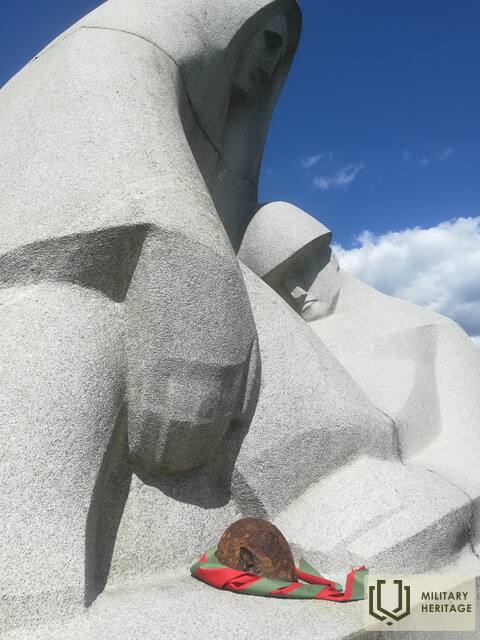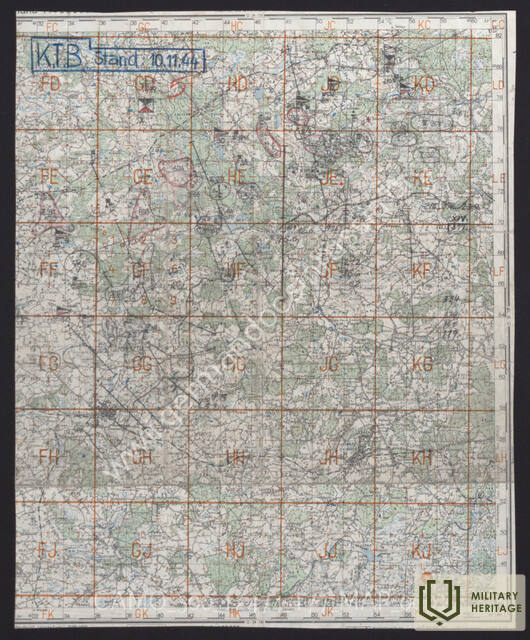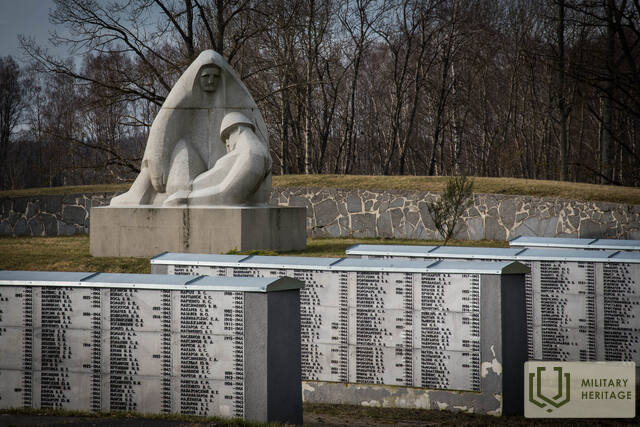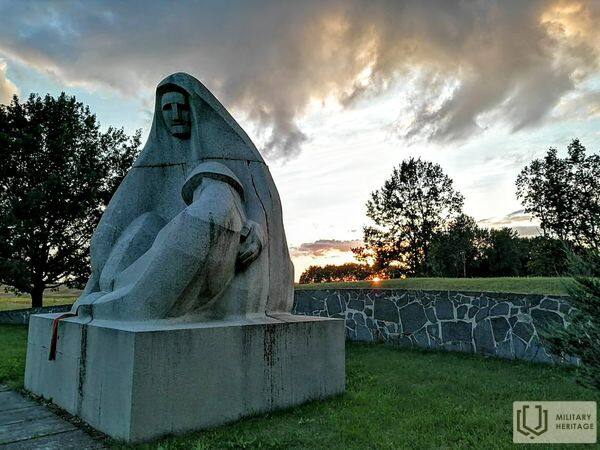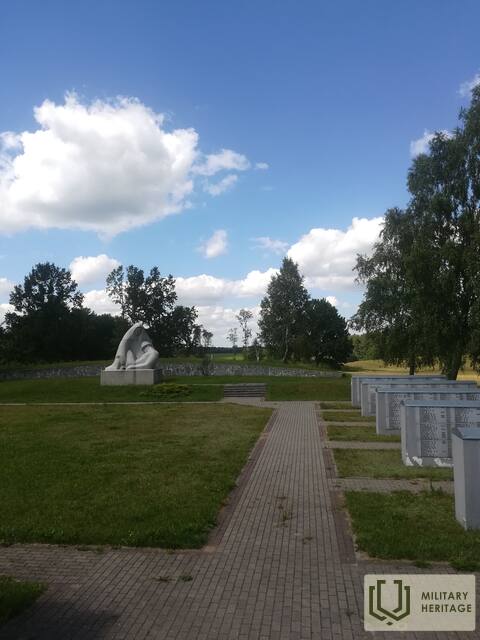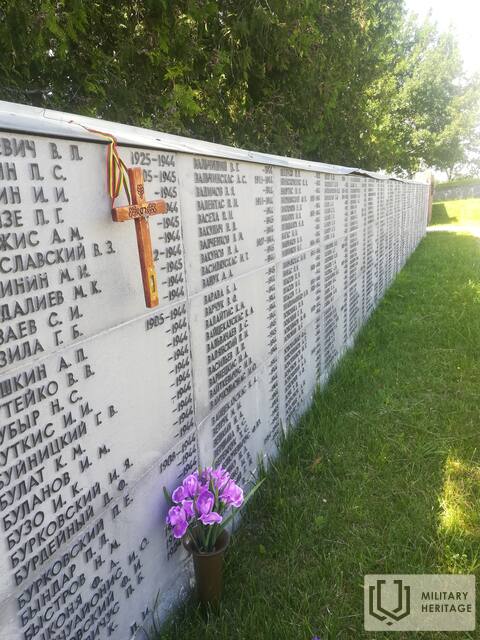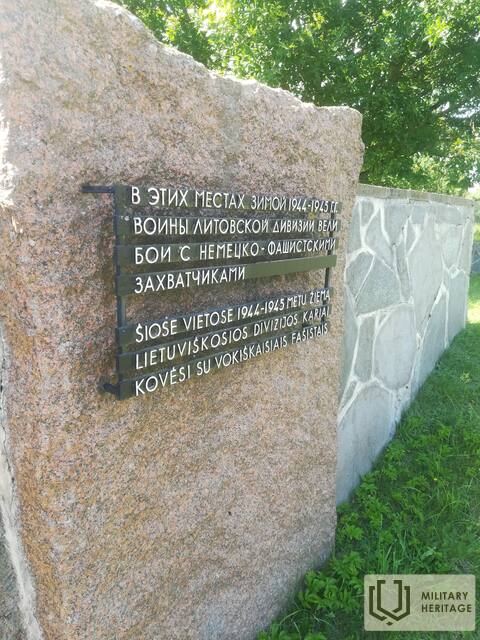Red Army Soldiers Memorial Site "Pieta" in Nīkrāce municipality
Memorial site

The Soviet Soldiers' Cemetery is located on the Skrunda - Embute - Priekule road, which is situated on a highland between the two rivers Dzelda in the south and Koja in the north. More than 3000 fallen are buried there.
World War II battles
The Red Army launched an offensive operation from 27 October 1944, now known as the 1st Kurland Battalion, with the aim of destroying the German army group "North", later renamed "Kurland". By 5 November, the Soviet 61st Army and parts of the 6th Guards Army and the 4th Shock Army reached the River Zeld and some units of the 5th Guards Panzer Army captured the bridgeheads on the north bank of the river. Before the next attack, the 2nd Guards Army of the 1st Baltic Front was moved into this sector to reach the Skrunda-Liepaja railway line. After the initial invasion was achieved, the attack towards Kuldīga would be continued by the 5th Guards Panzer Army.
The start of the 2nd Battle of Courland was delayed by weather conditions and only began on 19 November. The Red Army made its greatest gains in the vicinity of what is now the Cemetery of the Brothers and by the evening of 24 November the 1st and 60th Rifle Corps had captured the placdarm on the north bank of the River Koj. However, the Red Army's success ended there. The German Army Group North anticipated the direction of the Soviet attacks and concentrated appropriate forces here, including two panzer divisions.
On the evening of 26 November 1944, the Red Army attacks were halted and no further attempts were made to destroy the German forces in Courland until the end of the Second World War. In the battles that followed, the task was to prevent the German army from being evacuated from Courland.
Related timeline
Related stories
Pieta or "Māmuļa" Memorial Ensemble in Nīkrāce
Pieta, or Mammy, is a well-known motif in European culture and art, and was also used in Soviet times.




